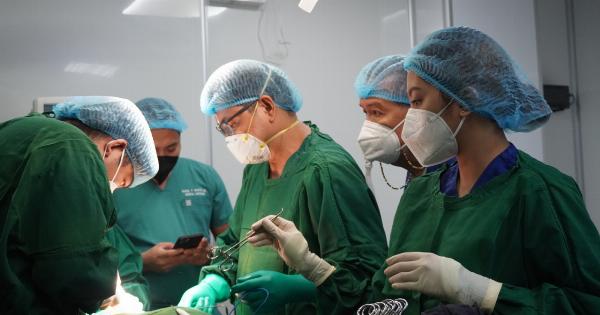Cholecystectomy, the surgical removal of the gallbladder, is a commonly performed procedure to treat gallbladder-related diseases.
Over the years, advancements in technology and surgical techniques have enabled cholecystectomy professionals to improve patient outcomes and reduce complications. In this article, we will explore some of the advanced techniques that are shaping the field of cholecystectomy.
Laparoscopic Cholecystectomy
Laparoscopic cholecystectomy, also known as minimally invasive cholecystectomy, is a technique that revolutionized the field of gallbladder surgery.
Instead of making a large incision, surgeons make several small incisions and insert a laparoscope (a small, flexible tube) with a camera to visualize the surgical area. Specialized surgical instruments are used to remove the gallbladder through these small incisions, reducing scarring, pain, and recovery time for patients.
Single-Site Cholecystectomy
Single-site cholecystectomy is a further refinement of laparoscopic cholecystectomy. Instead of making multiple incisions, the entire procedure is performed through a single incision, typically at the patient’s belly button.
This technique requires specialized instruments and a high level of surgical skill but offers even better cosmetic results and potentially faster recovery times.
Retrograde Dissection
Retrograde dissection is an advanced technique used during laparoscopic cholecystectomy. Traditionally, the cystic artery and duct are dissected first before reaching the gallbladder.
In retrograde dissection, the gallbladder is dissected first, allowing for better visualization and preservation of critical structures. This technique reduces the risk of injury to the bile duct and arteries, leading to improved patient outcomes.
Intraoperative Cholangiography
Intraoperative cholangiography involves the use of x-rays and contrast agents to visualize the biliary tree during cholecystectomy.
This technique helps surgeons identify abnormalities in the bile ducts, aiding in the detection of stones or strictures that may require additional intervention. Intraoperative cholangiography can be performed by injecting contrast agents directly into the ducts or by using specialized imaging techniques such as fluoroscopy.
Robotic Cholecystectomy
Robotic cholecystectomy is an emerging technique that utilizes robotic arms controlled by the surgeon to perform the surgery.
The robotic system provides enhanced precision, 3D visualization, and improved maneuverability compared to traditional laparoscopic techniques. This approach allows for more complex cases to be performed safely and provides an alternative for patients who may not be suitable for traditional or single-site cholecystectomy.
Cholangioscopy
Cholangioscopy is a technique that allows direct visualization of the bile ducts using specialized endoscopic instruments.
This advanced technique enables cholecystectomy professionals to visually inspect the ducts, remove stones or sludge, and perform interventions such as stent placement or dilation. Cholangioscopy can be performed intraoperatively or as a separate procedure in patients with suspected biliary pathology.
Fluorescence-guided Cholangiography
Fluorescence-guided cholangiography is a technique that utilizes near-infrared fluorescent imaging to visualize the biliary system.
Intravenous injection of a fluorescent dye allows the surgeon to identify the biliary anatomy during surgery, facilitating identification of structures and reducing the risk of injury. This technique is particularly useful in cases where the anatomy may be distorted or unclear.
Harmonic Scalpel
The harmonic scalpel is an advanced surgical instrument that uses ultrasonic energy to simultaneously cut and coagulate tissue.
This versatile tool has revolutionized cholecystectomy by allowing surgeons to perform precise dissection and hemostasis with minimal bleeding. The harmonic scalpel reduces the risk of thermal injury to surrounding tissues and provides better outcomes for patients.
Stitchless Cholecystectomy
Stitchless cholecystectomy, also known as glue cholecystectomy, is a technique that eliminates the need for traditional stitches or staples to close the incision.
Instead, specialized glue or adhesive strips are used to seal the incision, offering several advantages including reduced scarring, decreased risk of infection, and improved cosmetic outcomes.
Enhanced Recovery After Surgery (ERAS)
Enhanced Recovery After Surgery (ERAS) is a multimodal approach to perioperative care that aims to optimize patient recovery and reduce complications.
This evidence-based protocol includes preoperative counseling, optimization of nutrition and hydration, minimization of narcotic use, early mobilization, and advanced pain management strategies. ERAS has been shown to lead to faster recovery, decreased hospital stay, and improved patient satisfaction following cholecystectomy.






























